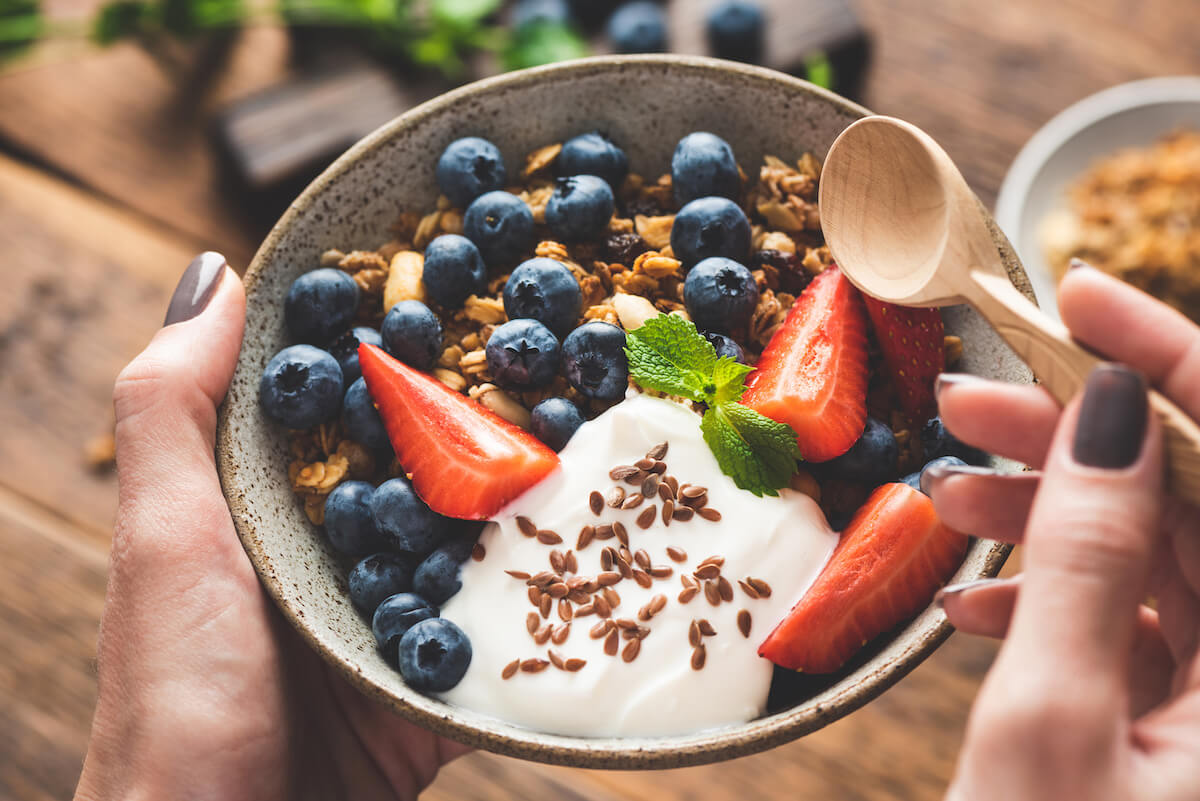
03 Jun High-Protein Vegan Snacks You Can Make at Home
We all need protein to stay healthy, but if you’re following a vegan diet, you need to pay special attention to be sure you’re getting enough. That goes double if you’re very physically active or working on building muscle and/or losing fat. Healthy high-protein vegan snacks can really help fill the gaps here.
Let’s clarify exactly why you need that protein and when to have it. We’ll also share some high-protein vegan snack ideas that will make your mouth water. After all, there’s no reason why healthy snacks can’t be delicious too.
Why You Need Protein
Protein is a critical nutrient that your body needs to function properly. It’s used to build your entire physical structure, including your bones, muscles, and organs. It’s also involved in producing hormones, enzymes, and hemoglobin, and it supports your immune system.
And if your goal is to build muscle or lose weight, protein is your friend. In combination with resistance exercise, it plays a critical role in reaching those goals. It also keeps you feeling full for longer, reducing any unhelpful cravings that might work against your progress.
The key is to make sure you’re getting enough protein, which is where your high-protein vegan snacks come in handy.
How Much Protein You Need
The amount of protein you need each day depends on your age, your level of activity, and your health goals. For example:
- The average adult needs 0.8-1.3 grams of protein per kilogram (0.36-0.6 grams per pound) of bodyweight.
- Older adults need around 1.2-1.5 grams of protein per kilogram (0.5-0.7 grams per pound) each day to counteract the muscle loss that naturally occurs as we age.
- If you’re very active, or an athlete or bodybuilder who wants to build muscle, you may need up to 2 grams per kilogram (0.9 grams per pound) per day.
What Is Vegan Protein?
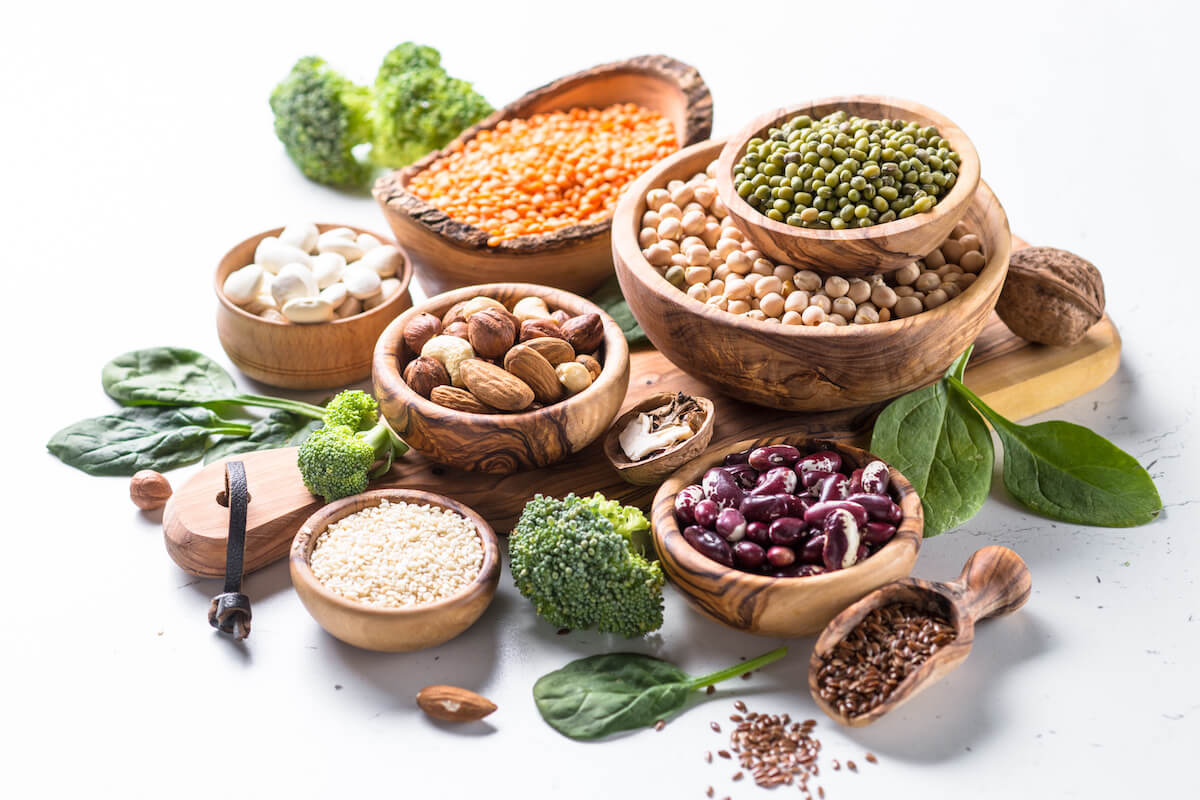
Depending on the food you eat, you’ll be getting either complete or incomplete protein.
Complete Proteins
Complete proteins provide you with all the essential amino acids your body needs to get every day from your food. Often, complete proteins are animal-based, such as beef, chicken, pork, fish, eggs, and dairy.
There are some notable vegan exceptions, like:
- Soybean products like tofu, edamame, or tempeh
- Quinoa
- Hemp
- Chia
- Buckwheat
- Amaranth
Incomplete Proteins
Incomplete protein sources provide you with only some of the essential amino acids. However, if you combine these foods in the right way, it’s quite possible to get all the essential amino acids over the course of the day.
Examples of incomplete vegan proteins include:
- Legumes like chickpeas, beans, or lentils
- Nuts like almonds, walnuts, cashews, pecans, Brazil nuts, hazelnuts, and peanuts
- Seeds like sunflower, flax, or pumpkin
- Cereals like rice, oats, wholewheat flour, or corn
- Vegetables like broccoli, spinach, mushrooms, artichokes, Brussel sprouts, or asparagus
Some well-known combinations that give you all the essential amino acids are:
- Beans and rice
- Nut butter on wholegrain bread
- Hummus and pita bread
- Salad with beans and seeds
What’s in High-Protein Snacks for Vegans?
The human body can’t survive on protein alone. You need all three macronutrients: protein, carbs, and healthy fats. You also need plenty of fresh fruit and vegetables every day to make sure you’re getting all the important nutrients your body needs, like vitamins, minerals, and fiber.
While you should aim to get most of your nutritional needs from whole foods, it can be a challenge to get enough protein from food alone, especially if you’re a vegan. A vegan protein powder supplement can be extremely helpful to your protein intake, whether you have it separately or include it in your whole food vegan recipes.
If you want to include a protein supplement in your meal planning, make sure you invest in a high-quality brand. An excellent choice would be Ingredient Optimized ioPea Protein, which is extremely bioavailable. ioPea is the first plant protein that’s been independently proven to be just as effective as animal-based proteins like whey. Look out for our partner products, Kaged Muscle Plantein and MyProtein’s The ioPEA, to use in your high-protein vegan snacks.
Note: If you have a medical condition and are on any kind of medication, you should check with your dietitian or doctor before taking protein supplements.
Best High-Protein Vegan Snacks
Of course, you can buy ready-made, high-protein vegan snacks. They often come at a cost, though — and we’re not just talking about money. Ready-made snacks are often full of added sugar or artificial sweeteners, which can work against your health goals. So if you’re considering buying them, make sure you read the label first.
Luckily, there are plenty of high-protein vegan snacks that won’t break the bank or take you hours to make. They’re based around some core high-protein vegan foods, and they’re extremely flexible, so you can use what you have on hand.
Let’s take a look.
Soy Products
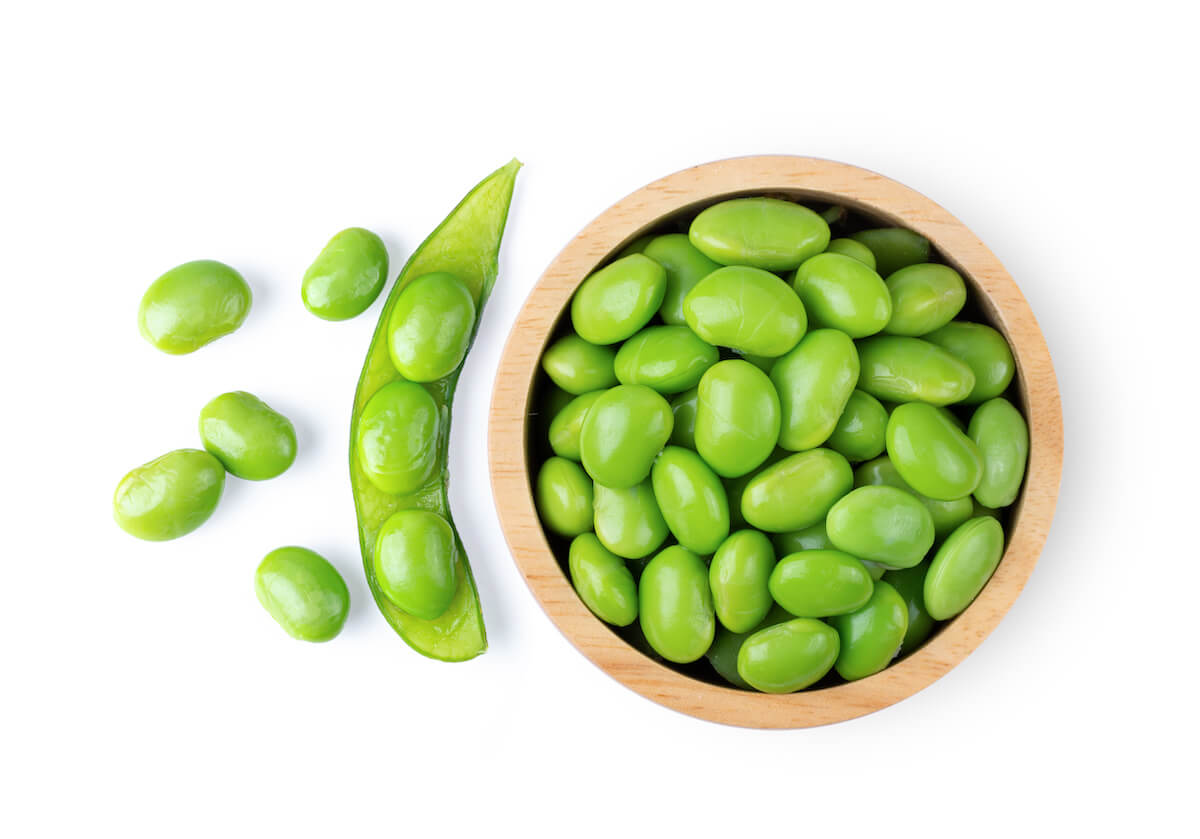
Soybeans are some of the highest-protein vegan foods available, and they come in many different forms, many of them snackable.
For example, edamame are soybeans that have been harvested very young. They’re still soft, and, unlike many other soy products, they don’t need to be processed before you can eat them. Use them steamed as a side dish, in soups, salads, or stir-fries, or roast them for a tasty snack.
Tofu is a more processed soy product that doesn’t have much flavor, so it soaks up whatever flavors you add to it. Tofu can be eaten savory as a meat substitute (it’s good with edamame, too) or as a sweet yet healthy chocolate dessert that’s also packed with protein.
Tempeh is another derivative of soybeans, processed a little differently from tofu, and best used in heartier, savory dishes. Try it as a substitute for bacon in your next vegan BLT.
Chickpeas and Hummus
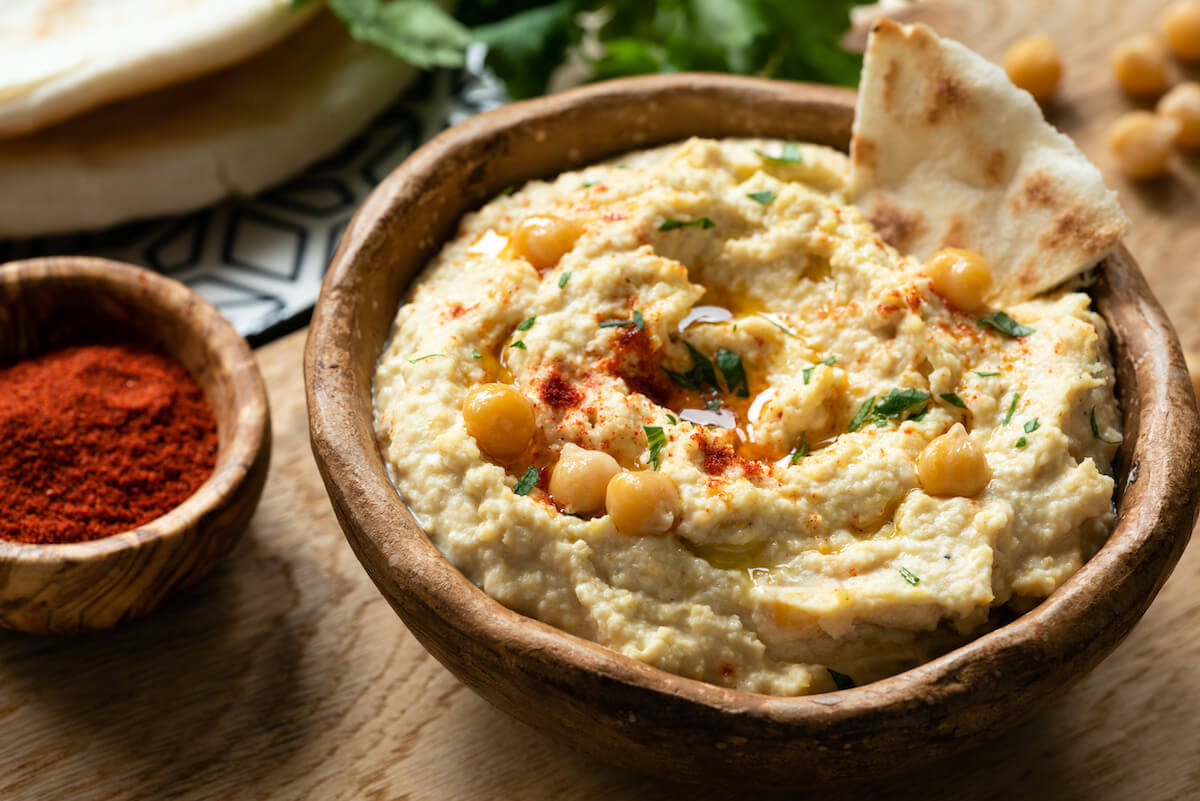
Chickpeas are nutritional powerhouses and so versatile too. Add them to salads, stews, and soups, or make them into hummus.
You could buy it, but traditional hummus is a snap to make by simply blending together canned chickpeas, garlic, olive oil, lemon juice, and tahini. If you use lentils or any kind of beans instead of chickpeas, you’ll end up with a dish that tastes slightly different but equally delicious.
Use it as a dip for tortilla chips or scoop up with veggies like baby carrots, sticks of cucumber or celery, or mini tomatoes. Or spread it on wholegrain rice cakes, seed crackers, or bread and top with sun-dried tomatoes, avocado, and sprouts.
You can also go another route completely and make crispy roasted chickpeas or chickpea cookies, both of which are highly portable and perfect for snacking.
Nuts and Seeds
Nuts are very nutritionally dense and make excellent high-protein vegan snacks. There are so many varieties out there that you’re sure to find something you like. Just for starters, choose from almonds, walnuts, pecans, macadamias, cashews, hazelnuts, pistachios, and peanuts (which are actually legumes, but for our purposes, they’re nuts).
Seeds are also incredibly good for you, despite their small size. From sunflower seeds and pumpkin seeds to flaxseed and hemp, there are so many ways to use them.
Eat nuts and seeds by the handful or throw them into a quick salad or stir-fry to boost the protein content. If you grind them, they make a tasty, gluten-free flour you can use in different recipes. Grind them further and you’ll end up with nut butter. Whether it’s peanut butter, almond butter, or sunflower seed butter, you can spread it on crackers, veggies, or sliced fruit for a fast snack — apples and bananas are especially tasty.
Chia Seeds
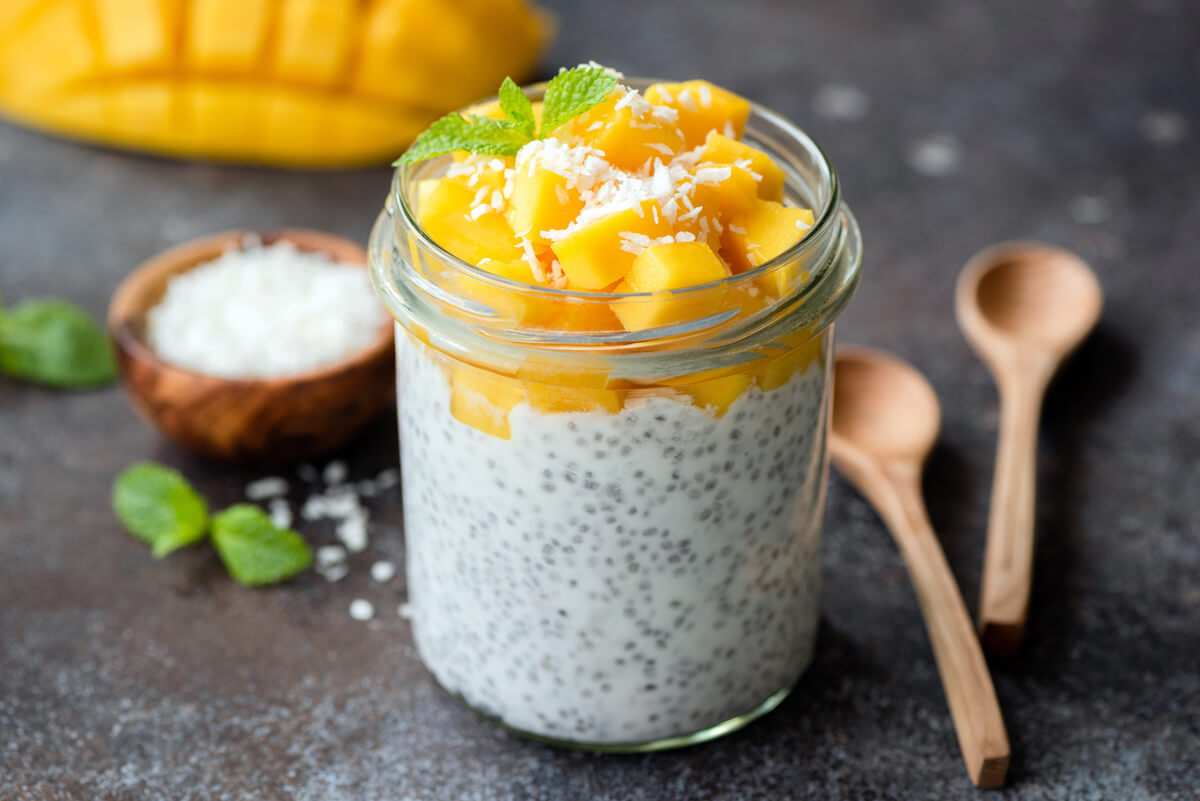
Yes, chia seeds are seeds, too, but they deserve a category of their own. They’re often considered a superfood as they’re packed with goodness, plus they have some extra special properties. You can use them in all the same ways as nuts and seeds, but when you add them to liquid, they really come into their own. They absorb the liquid and swell up into a kind of gel.
Perhaps the most well-known way to use them is in chia pudding. For this, you can use any liquid — nut milk and coconut milk work very well, or try coffee for a flavorful twist. If you’d like to increase your protein intake further, feel free to add some protein powder. Protein powder also thickens the mixture, so you’ll need fewer chia seeds.
While this requires a bit of forethought (because the liquid and chia seeds need to sit for a while), you can make the base a few days in advance. Then when you’re ready for your snack, add pretty much anything you like, whether that’s fresh fruit, nuts and seeds, cinnamon, honey, or cocoa.
Quinoa
Although quinoa is often considered a grain, it’s technically a seed. It contains many different nutrients and has quite a bit more protein than grains like brown rice, for which it can be substituted. It comes in a variety of colors, including white, black, and red, which each have a slightly different texture and flavor.
You do need to think ahead for snacks made with quinoa (and be sure to cook it correctly), but if you’re organized with your meal prep, you can store some cooked quinoa in your fridge, which makes it quick and easy to use. Throw in some black beans, onion, corn, tomato, and your choice of herbs, plus some olive oil and lemon juice, and you have a fast and healthy, high-protein, vegan snack. Put that into a wrap, and it’s instantly portable.
Cook the quinoa with a bit more water for slightly longer, and you’ll have quinoa porridge. Mix in some coconut milk for creaminess and fresh blueberries to get your antioxidants. If you want to increase your protein content, too, you can add some protein powder. Then top with some of those seeds and/or nuts.
Granola or Trail Mix
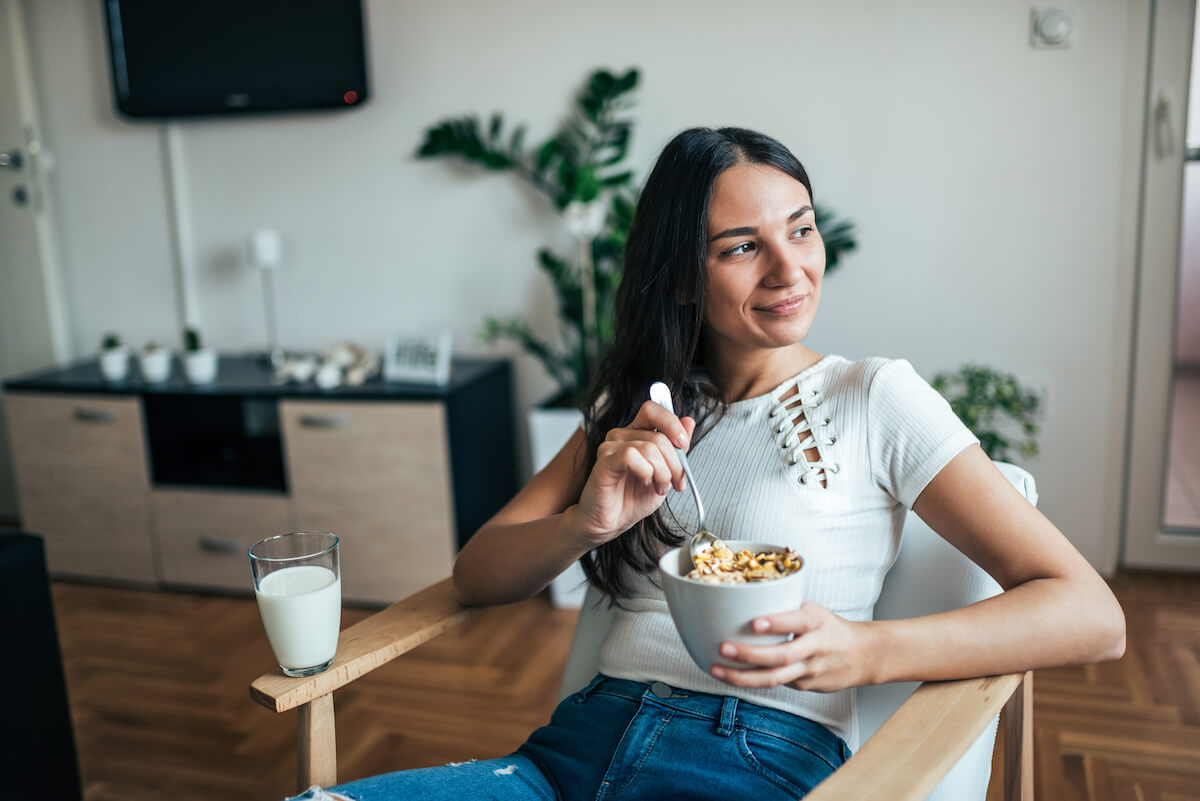
Granola is another versatile high-protein vegan snack that you can munch dry on the run or have at home in a bowl with some coconut yogurt, almond milk, or other dairy-free milk. It’s pretty easy to make — you’ll need some oil, a pinch of sea salt, and perhaps some maple syrup or honey to bind the oats into nice clusters. If you’re adding protein powder, add it then, too. You can bake this base and then mix in some nuts, seeds, coconut, dried fruit, or even vegan dark chocolate chips. You can also add the hardier mix-ins, like nuts, seeds, or coconut, before baking to get some more roasted flavors in your granola.
Or, increase your mix-ins after baking and create some handy, delicious trail mix. While trail mix is often (but not always) a no-bake, raw snack, a base of homemade granola is a perfect complement to crunchy nuts, chewy dried fruit, and delicious dark chocolate.
Protein Bars or Bites
Protein bars or protein bites are a slightly different take on the same combinations of ingredients as granola and trail mix. They’re widely available in shops, but you really need to read the ingredients list (and check the price tags) if you buy them. You’re much safer with homemade, and luckily, they’re very simple to make.
You can go with baked bars or no-bake bites that come out a bit like cookie dough. Make sure you add protein powder for an extra boost of protein. Pair these with fresh fruit or rich nut butter for a satisfying, energizing snack.
Smoothies and Shakes
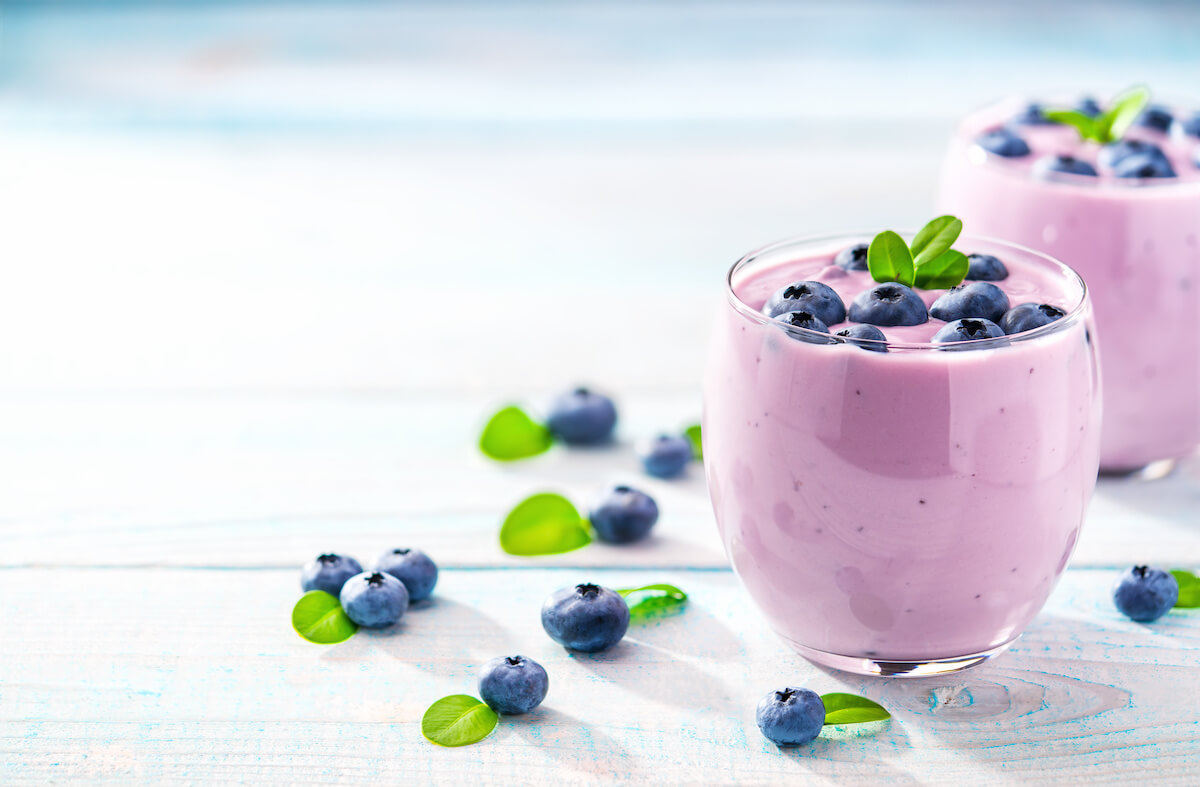
Protein shakes or smoothies are another extremely versatile high-protein vegan snack. Start with a base of any liquid you choose, whether that’s water or dairy-free milk. Then add protein powder, fruit like bananas, blueberries, or dates for sweetness, and basically any combination of nuts and seeds — or nut or seed butter — that you choose.
You can also add oats, tofu, coconut oil, and/or veggies like spinach or kale to increase the nutrient value even further. And if you’re a fan of chocolate, raw cacao is a delicious and nutritious superfood that works well in smoothies.
Blend it all up well until it’s the consistency you like, adding more liquid if it’s too thick. Enjoy your high-protein treat on the go, while you unwind after work, or for an evening snack.
When To Eat Your High-protein Vegan Snacks
There are many different theories about the best time to have your protein, whether that’s before a workout, during a workout, or after a workout. It turns out, though, that the window of time in which protein can support intense activity and help you build muscle — if that’s your goal — is fairly wide.
It’s also important to note that there’s only so much protein your body can process at once. That said, it would be quite difficult to get too much at once from vegan protein sources anyway.
So the key here is to try to eat some protein at every meal and then supplement that with high-protein vegan snacks in between meals. That way, you’ll be giving your body protein throughout the day. This steady supply will keep your system functioning at its best.
High-Protein Vegan Snacks Keep You Healthy and Satisfied
Your body needs protein for a multitude of important functions, and, as a vegan, it can be a challenge to get enough. Try to include protein with every meal, and then supplement as necessary with high-protein vegan snacks.
You can buy high-protein vegan snacks, but they often include other less desirable ingredients. Instead, stock up on some basic high-protein foods like nuts, seeds, legumes, and the right grains, so you can mix and match a menu of delicious snacks that keep you feeling full and focused.


